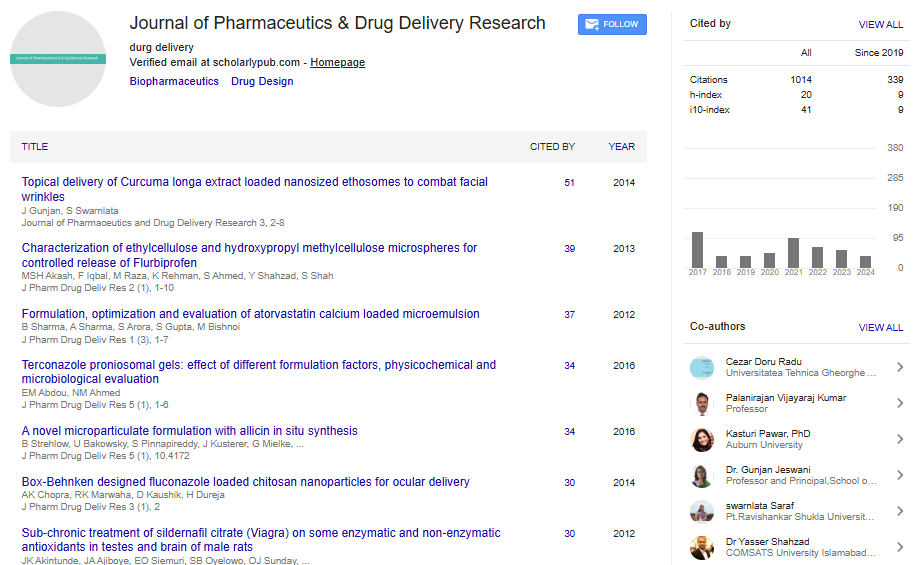Assembly of double-hydrophilic block copolymers triggered by gadolinium ions: New colloidal mri contrast agents
A Figarol, C Frangville, Y Li, C Billotey, D R Talham, L Marmuse, P Roux, J-D Marty and C Mingotaud
University of Toulouse, France
University of Florida, USA
Université Jean Monnet- Université de Lyon, France
: J Pharm Drug Deliv Res
Abstract
Statement of the Problem: Magnetic Resonance Imaging (MRI) is a routinely used technique for medical imaging, often implying the use of a Contrast Agent (CAs) to improve the image quality. However, molecular agents possess limitations, such as rapid elimination and complications from extravasation, and they are less efficient at the higher magnetic fields of modern MRI instruments, so there is still a need for concepts for more efficient CAs with improved relaxivity enhancement or extended circulation lifetime. Methodology & Theoretical Orientation: Mixing double-hydrophilic block copolymers containing an ionizable complexing block and a neutral block with polyvalent metal ions (e.g., Cu2+, Zn2+…) leads to the spontaneous formation of polymeric nanoparticles. Very recently, we demonstrated that copolymers made of poly(acrylic acid) and poly(ethylene oxide) blocks interact efficiently with gadolinium ions and forms nano-objects with a diameter of 20 nm. These nanoparticles are biocompatible and surprisingly stable, even after dilution or under dialysis. Therefore, they were tested as contrast agent for MRI. Their properties in relaxometry are quite exceptional and much better than commercially available compounds. In vivo, these nano-objects are well tolerated by rats and show surprisingly good stability, fast urinary elimination, low reticuloendothelial system uptake, and superior magnetic relaxivity properties even at high magnetic field. With long blood remanence and high induced contrast, this new type of Gd probe could be used for MRI at lower concentrations than currently used contrast agents. The easiness to elaborate such hybrid systems suggests their use in various medical and eventually multimodal imaging techniques. Conclusion & Significance: This work shows that a simple formulation of commercial products can lead to relevant new contrast agents.
Biography
Agathe Figarol has developed her expertise in nano-bio interactions since her MSc. thesis in Health and the Environment (Cranfield University, UK). Looking at the cellular impact of silica nanomaterials on keratinocytes, she was already starting to combine the different approaches of physical chemistry and biology relying on her technical background in biology engineering (Université de Technologie de Compiègne, France). She further enhanced her pluridisciplinarity along her PhD exploring the impacts on physico-chemical characteristics of carbon nanotubes on macrophages (Ecole Nationale Supérieure des Mines de St-Etienne, France). Her confirmed enthusiasm for the dynamic and state-of-the-art field of nanobiology led her, after a year of discovery of the industrial strategy on toxicology, to join a collaborative project on polymeric nanovectors (IPBS and IMRCP laboratories from the Université Paul Sabatier de Toulouse, France).
Email: Agathe.Figarol@ipbs.fr
 Spanish
Spanish  Chinese
Chinese  Russian
Russian  German
German  French
French  Japanese
Japanese  Portuguese
Portuguese  Hindi
Hindi 
